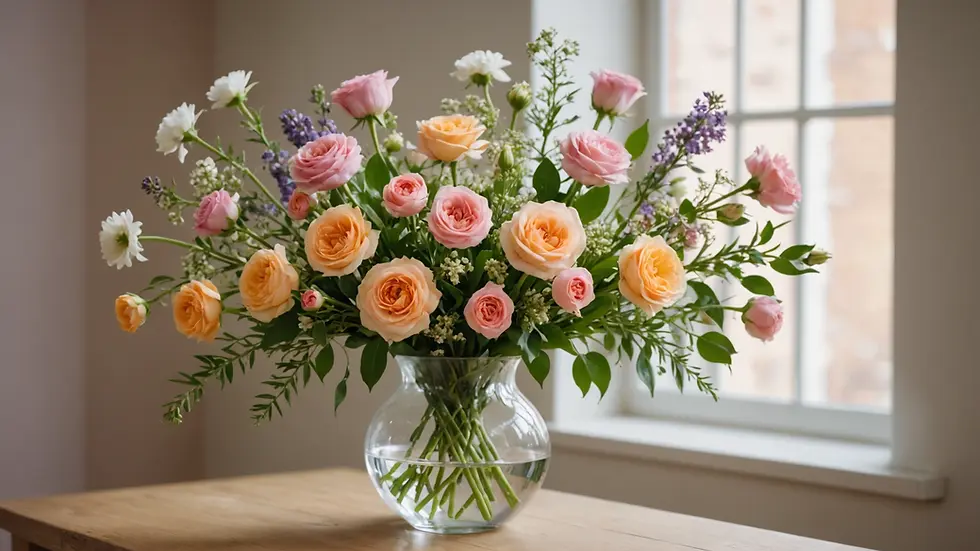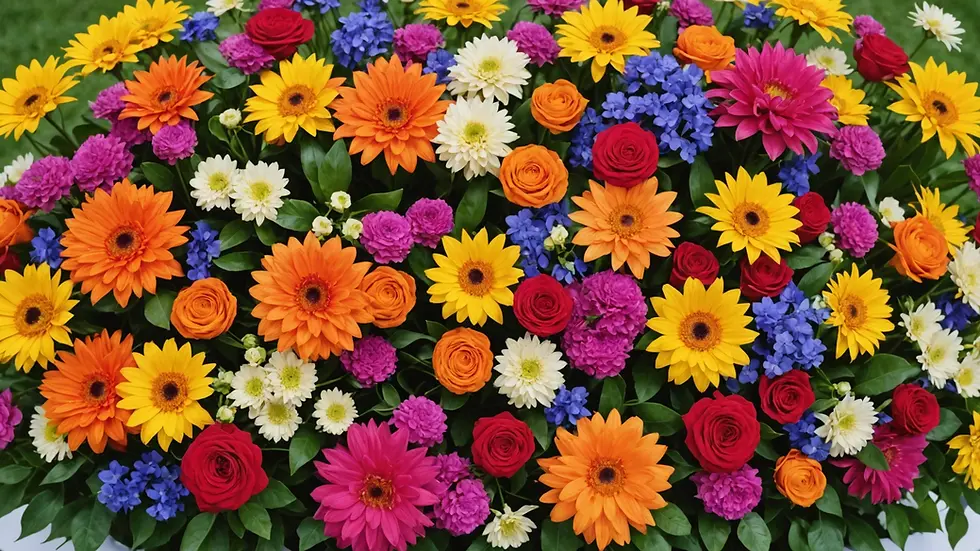How Will the Color Palette Trends of 2025 Impact Event Industry Standards?
- Aiya Joseph

- Jul 6
- 4 min read
As we dive into the vibrant decade of the 2020s, emerging color palette trends have the potential to reshape the event industry. These trends provide not just visual inspiration, but a guide for creativity and emotional connection. With attendees increasingly valuing meaningful experiences, event organizers must innovate their color schemes to align with evolving preferences. This article explores the anticipated color palette trends of 2025 and how they may transform event design and set new standards within the industry.
The Psychology of Colors in Events
Colors can impact emotions, set moods, and shape perceptions, making them vital in event planning. For example, blue hues often signify calmness and professionalism, while vibrant oranges and reds can inspire excitement and energy. Understanding these associations allows event planners to craft experiences that are visually stunning and emotionally resonant.
In 2025, pay special attention to how colors can be harmoniously integrated into all elements of event design. Incorporating blue uplighting can create a calming ambiance for corporate functions, while using warmer shades can invigorate social gatherings.
Anticipated Color Palette Trends of 2025
1. Earthy Tones
Expect earthy tones—such as terracotta, olive green, and rich browns—to take center stage in 2025. This trend reflects a growing commitment to sustainability in event planning.

As sustainability concerns rise, planners can incorporate materials like reclaimed wood and natural fabrics in their décor. Studies indicate that events utilizing these organic hues can enhance attendees' feelings of comfort by up to 30%. These colors foster a welcoming environment that aligns with eco-conscious themes.
2. Soft Pastels
Soft pastel shades are expected to return, offering a gentle counterpart to the bold colors of previous years. Anticipated favorites include mint green, powder blue, and soft pink, ideal for intimate gatherings like weddings and baby showers.
These pastel colors evoke feelings of serenity and comfort. Pairing soft pink with pale lavender can enhance an event's delicate atmosphere, particularly in garden-themed settings. Research shows that events with pastel themes can increase attendee satisfaction rates by 25%.
3. Bold Contrasts
In 2025, the use of bold contrasts will also gain popularity. Expect to see vibrant palettes that juxtapose deep colors like purple and bright yellow or rich teal with fiery coral.
This playful approach encourages deeper engagement among attendees. High-contrast color schemes can help delineate areas within an event space, guiding guests toward key attractions, thus enhancing both navigation and focus.
Creating Cohesion with Color
Implementing color palettes effectively starts with ensuring cohesion across all elements. Here are key considerations for event planners as they utilize color trends in 2025:
Venue and Decorations
Choosing a venue that complements the selected palette can significantly amplify visual impact. A rustic venue paired with earthy tones can create an inviting backdrop. Utilizing decorations like table settings and floral arrangements that align with the chosen color scheme pulls everything together.
For instance, an event centered around bold colors might incorporate vibrant linens and dramatic floral installations to create an eye-catching visual experience.
Branding and Collateral
Consistent branding is essential for creating a complete experience. From invitations to on-site signage, the color palette should resonate throughout all materials.
In 2025, the refined visual language that color conveys will make it even more critical to integrate hues in promotional materials, creating a seamless transition for guests from online to on-site experiences.
Incorporating Trendy Colors in Event Design
Designing an event with these trends in mind requires thoughtful strategies:
1. Use of Technology
Lighting technology greatly enhances the implementation of color palettes. LED lights, for instance, allow planners to dynamically change colors throughout the event, adjusting to different sections or moments.
This adaptability not only increases enjoyment but allows planners to mirror the event's mood, enhancing engagement. For example, transitioning from soft pastels during a wedding ceremony to vibrant contrasts during the reception can create distinct atmospheres.
2. Unique Floral Arrangements
Flowers serve as a pivotal element in executing color palettes. Collaborating with florists who understand emerging trends can produce innovative yet cohesive arrangements.
Using locally sourced blooms that reflect current palettes—whether earthy, pastel, or vibrant contrasts—adds an extra touch of authenticity and attracts guest interest and conversation.

3. Engaging Experiences
The design of interactive elements should align with the event’s color palette for a fully immersive experience.
For instance, a photo booth designed with a backdrop in a high-contrast palette can encourage guests to capture vibrant memories, enhancing overall event branding and engagement.
The Importance of Adaptability
As trends influence color choices, adaptability remains essential in the event industry. While 2025 color trends guide aesthetics, planners must remain flexible to accommodate client preferences and specific event needs.
Each event has its unique goals. Whether opting for grounding earthy tones to foster tranquility or bold colors to ignite excitement, the focus should always be on creating unforgettable experiences.
Case Studies of Successful Color Implementations
Learning from successful events can inspire fresh ideas and approach color integration effectively.
Case Study 1: The Summer Festival
A recent summer festival successfully blended earthy tones with bold contrasts, combining deep greens and browns with bright yellows and pinks. This mix created a visually engaging space that drew in diverse crowds and encouraged both relaxation and interaction.
Case Study 2: The Elegant Wedding
A winter wedding used a pastel color scheme featuring soft pinks, light blues, and creamy whites. This décor aligned with the couple’s vision, creating an intimate setting that fostered treasured moments among guests.
These examples showcase how thoughtfully chosen colors encapsulate emotions and themes, reinforcing the importance of strategic color selection in event planning.
A Bright Future for Color Trends in Events
As 2025 approaches, the evolution of color palette trends presents promising opportunities for the event industry. By embracing the tranquility of earthy tones, the soothing quality of soft pastels, and the excitement of bold contrasts, event planners can craft experiences that resonate profoundly with attendees.
These color choices, combined with flexibility and careful design, will ensure events are lasting, memorable experiences. As the world embraces the influence of color on mood and perception, it is clear that the color palette of 2025 will serve as more than mere decoration—it will be foundational to creating unforgettable events.
How Will the Color Palette Trends of 2025 Impact Event Industry Standards?



